$17. 06
Product Description
Customer Reviews
There are no reviews for this product at this time.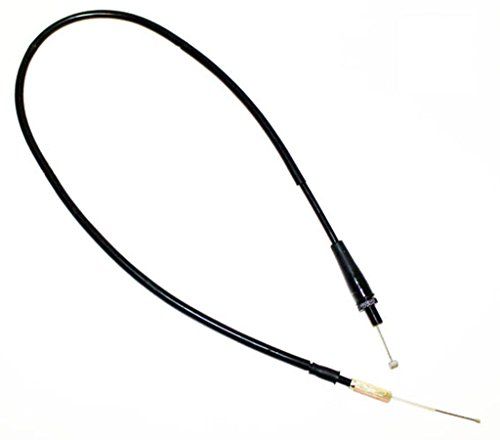
Write a Review
Rating Required Select Rating1 star (worst)2 stars3 stars (average)4 stars5 stars (best)
Name
Email Required
Review Subject Required
Comments Required
Related Products
Shipping & Returns
We understand that online ordering can be difficult and at times merchandise needs to be returned for either a refund or an exchange. Please read through our Return/Exchange Policy before starting the return process. If you have any questions, please contact our Customer Service Center.
Please read through our Return/Exchange Policy before starting the return process. If you have any questions, please contact our Customer Service Center.
The throttle cable may seem like a simple part of your bike, but it can keep you from riding if not properly maintained or replaced. Read as we take you through cable maintenance and install tips for a new ProX throttle cable.
Read as we take you through cable maintenance and install tips for a new ProX throttle cable.
With the riding season upon us, it’s not a bad time to cover an important, but often neglected, maintenance task: throttle cable inspection and replacement. The throttle cable connects your mind and body to the heart of your machine, which makes it an incredibly important link. Worn, damaged, misadjusted, or corroded throttle cables can lead to dangerous riding conditions and poor engine performance. Let’s dive into tackling this common maintenance task.
The throttle cable is a critical component to your bike's function, but it's often overlooked. Follow the guidelines below to make sure you're not stuck with a malfunctioning throttle.Most service manuals suggest checking throttle operation after each race or every 2.5 hours of operation. Along with this generic recommendation, engine performance can also be an indicator of cable issues. Poor full throttle operation may be a sign that the throttle cable has too much slack. An engine that is difficult to control or has an erratic idle may indicate that there is not enough throttle cable slack.
An engine that is difficult to control or has an erratic idle may indicate that there is not enough throttle cable slack.
Your service or owner’s manual should provide all the pertinent cable adjustment information you need for your specific make/model of machine, and should be used to complement the advice and recommendations provided in this write-up. Within the service manual, you should find free play specifications, throttle cable routing information, lubrication info, and the prescribed tensioning procedure.
We’ll start by outlining the basic checks and adjustments that should be performed to ensure correct throttle cable operation. Once these are concluded, we’ll discuss complete cable replacement.
Cable Condition
The throttle cable should be visually inspected for damage. Cracks, kinks, corrosion, and severely worn areas due to rubbing should all be cause for concern.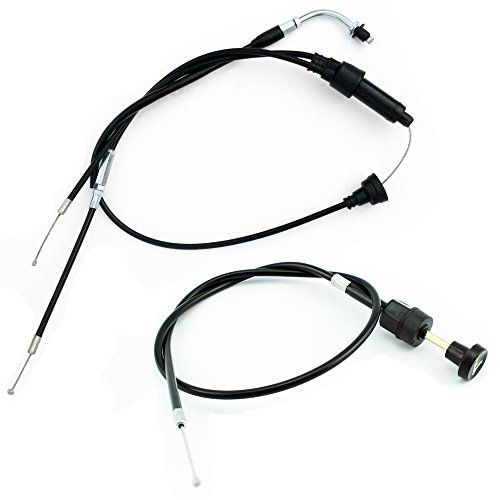 Systematically inspect the cable from the throttle grip to the throttle body/carburetor as best as visually possible.
Systematically inspect the cable from the throttle grip to the throttle body/carburetor as best as visually possible.
Checking Cable Free Play
Throttle cable free play is typically checked by measuring the amount of throttle grip movement relative to a fixed point on the throttle cable housing. Most makes/models specify 2-3mm of throttle grip free play. This can easily be checked by referencing a predominant feature on the throttle grip, or marking it with a marker and measuring the amount of motion relative to the housing with a ruler, scale, or caliper.
You can measure throttle cable free play by marking the grip in accordance with a reference point, such as the split in the throttle cable housing. Twist the throttle until you feel resistance, and measure the amount of movement.Checking Throttle Return
All throttle systems designed for powersports applications are designed to fail closed in the event the throttle cables break or the rider loses control of the machine. Return spring pressure can be inadequate if the throttle cables are sticky, binding, or if the throttle grip is binding on accessories such as handguard mounts.
Return spring pressure can be inadequate if the throttle cables are sticky, binding, or if the throttle grip is binding on accessories such as handguard mounts.
Check throttle operation by fully opening the throttle and letting go. Confirm that the throttle quickly and easily returns completely to the closed position. Check throttle return with the handlebars all the way to the left, centered, to the right, and halfway between center and full stop on each side. If the throttle does not completely return the cable may be binding, incorrectly routed, frayed, or corroded, which warrants further investigation.
With the bike OFF, twist the trottle open to the stop and let go. Make sure the throttle returns to the closed position quickly and easily. Perform this test with the handlebars turned to both extremes, as well as at multiple positions in between.Throttle Cable Adjustment
Most modern machines utilizing throttle bodies and carburetors utilize two throttle cables, aptly identified as accelerator and decelerator cables. Older carbureted machines often only feature one throttle cable. Depending on the type of machine you own, the adjustment process may differ slightly from the outline I’m going to provide.
Older carbureted machines often only feature one throttle cable. Depending on the type of machine you own, the adjustment process may differ slightly from the outline I’m going to provide.
The number of adjustment locations will also differ depending on the machine in question. Some applications have adjustment points at the throttle body or carburetor and at the throttle cable housing, while others have a single adjustment point on the throttle cable housing. On machines with multiple adjustment points, minor adjustments are made at the throttle cable housing and major adjustments are taken care of on the throttle body/carburetor.
Dual Cable Adjustment
The first step to adjusting dual throttle cable machines is to remove any necessary dust covers and identify the accelerator and decelerator cables. The accelerator cable goes into tension when the throttle is twisted open and the decelerator cable is put in tension when the throttle is closed. Each cable is often easily identified visually by looking at the housing design or by making minor adjustments and determining what is affected.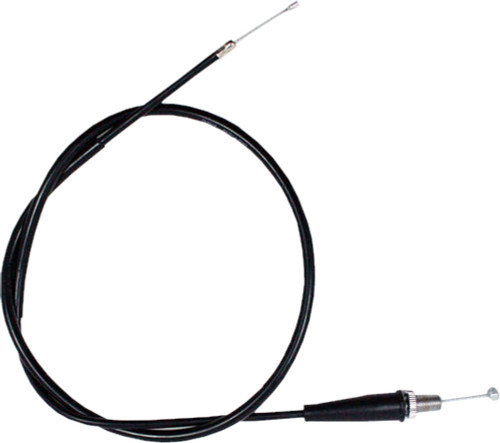
To adjust the cables, the locknuts are loosened and the cable adjusters are turned in to slacken or out to tension them. This can be accomplished by hand or with an appropriately sized wrench. Commonly, the decelerator cable is adjusted first. Decelerator cable tension is usually set so that there is no play when the throttle grip is completely closed. Once the decelerator cable has been set, the accelerator cable is adjusted. The accelerator cable tension is usually set so that 2-3mm of free play is present in the throttle grip. Once the correct tension has been applied, the lock nuts should be snugged and any dust covers should be slid back over the adjusters.
Cables can be adjusted using the appropriate size wrench. Turn in to slacken, and out to tension. Feel the throttle as you adjust to know how close you are.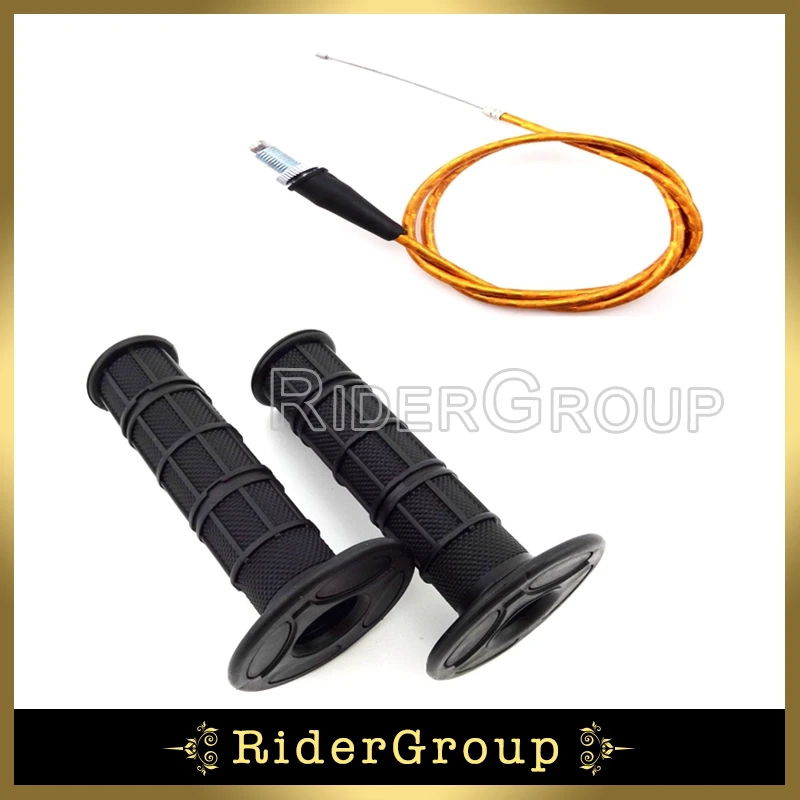 Typically, the decelerator is adjusted first.
Typically, the decelerator is adjusted first.Single Cable Adjustment
Single throttle cable adjustment is straightforward. Any dust covers protecting the cable adjuster should be removed first. Next, the locknut should be loosened. The cable adjuster can then be adjusted in or out so that the throttle grip has the correct amount of free play, which is usually 2-3mm. Once complete, the locknut can be snugged and dust cover reinstalled.
Checks After Adjustment
Upon completion of any cable adjustments, the system should be checked as outlined in the throttle return section of this article. Once you have confirmed that the throttle return functions properly in all handlebar positions, the engine should be started. With the engine idling and in neutral, rotate the handlebars from stop to stop and listen for any changes in idle behavior. Increases or decreases in idle speed may suggest that the throttle cable is binding either due to tight spots or cable routing.
Throttle Cable Replacement
ProX has throttle cables available for a long list of applications.In the event that the throttle cable warrants replacement, cable replacement can be accomplished fairly easily. Selecting and sourcing a new throttle cable is equally important as carrying out the work. Sourcing OEM parts from a dealer can lead to overpaying, so it’s common for people to turn to the aftermarket. However, it’s important to be careful not to sacrifice quality for cost.
ProX offers throttle cables made by OE manufacturers at affordable prices. Because they’re made by OEM suppliers, OE quality and specifications are met. ProX throttle cables are made with pre-lubricated nylon inner sleeves, tightly-wound steel inner cables, and a flexible PVC outer jacket, which, combined, ensure smooth cable operation and long life.
ProX throttle cables are made by OE suppliers to OEM specifications, and they offer more affordability.
Find ProX cables for your model here.
The architecture of your specific machine will largely dictate what must be removed in order to successfully replace your throttle cable. Typically, the following components will need to be removed:
Once the necessary components have been removed, replacing the throttle cable is straightforward. We'll walk through the necessary steps with the assumption that we're working on a dual cable machine. The steps for a single cable application are nearly identical.
Start by loosening the throttle cable adjusters on the throttle housing and slackening the cables. Next, remove the fasteners holding the throttle cable housing together. Once removed from the handlebar remove the throttle cable ends from the throttle cable housing pulley. Note the accelerator and decelerator cable positions.
Once removed from the handlebar remove the throttle cable ends from the throttle cable housing pulley. Note the accelerator and decelerator cable positions.
Remove any necessary covers from the throttle body or carburetor to gain access to the throttle cable ends. Note the locations of the accelerator and decelerator cables prior to removing them. Loosen the necessary lock nuts and adjusters then remove the cable ends from the pulley.
Remove the protective cover from the throttle body or carburetor, note which cable is which, and carefully remove the cable ends from the pulley.On single cable carbureted applications featuring round or oval slide carburetors, unscrew the top cap of the carburetor where the throttle cable enters the slide. Compress the return spring and carefully remove any necessary hardware securing the cable end to the slide.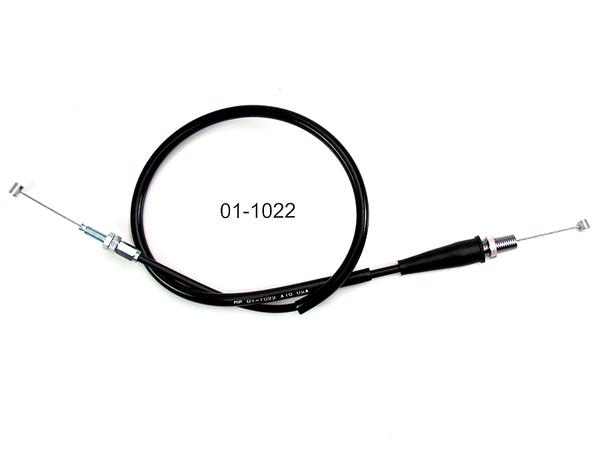 Once removed, the cable can be loosened and removed from the carburetor cap.
Once removed, the cable can be loosened and removed from the carburetor cap.
Prepare the new throttle cables by applying cable lube to both ends of the cables. Check the smoothness of the cables by moving them back and forth prior to installation.
A cable luber is a great tool to have. It simply fixes to the end of the cable, and allows the lube to flow through the inside of the cable.Once the old throttle cables are free on both ends, note how they have been routed. Then, remove the cables and route the new cables in a similar fashion. If the old cable routing is suspect, confirm with your service manual the factory prescribed cable routings.
Be sure to follow the OEM routing when installing your new cables.Upon successful cable routing, begin the reassembly process. Start by installing the cable ends into the throttle body/carburetor and throttle cable housing. Turn the cable adjusters on the throttle grip housing all the way in, then turn each of them one turn out. Once this is done, unless otherwise specified, use the throttle body or carburetor adjustment features to take the majority of the slack out of the cables. Refer to the tips outlined in the cable tension adjustment section to correctly tension the throttle cables. After the cable tensions have been set, be sure to check the functionality of the throttle return as prescribed previously.
Once this is done, unless otherwise specified, use the throttle body or carburetor adjustment features to take the majority of the slack out of the cables. Refer to the tips outlined in the cable tension adjustment section to correctly tension the throttle cables. After the cable tensions have been set, be sure to check the functionality of the throttle return as prescribed previously.
Once the new throttle cables have been installed and the return checks are complete, finish the job by reinstalling any items that required removal to gain access to the cable system. With everything reinstalled, test the functionality of the system first with the engine off, then with the engine idling to ensure there are no abnormalities.
Author admin Reading 12 min Views 44 Published
Content
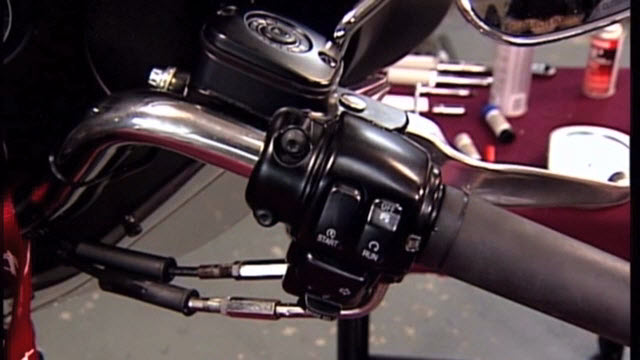
Many domestic carbureted vehicles have a carburetor throttle transmission. Why such a project was made is not clear, but certainly not for the convenience of the driver.

The only advantage of the traction mechanism is its high reliability. Perhaps this was the reason for the appearance of such an archaic node, but the numerous disadvantages of such a solution outweigh the only advantage. It is not surprising that many owners of such cars are trying to replace traction with cable.
The photo shows the cable box.
When the accelerator pedal is depressed, the cable rotates the sector of the pulley to the desired angle. The movement is linear, the dependence is linear. This allows precise dosing of the damper opening. Pedal design may differ from the "old mode" floor pedal. It is suspended from the front panel and moves like a brake and clutch.
There are cables and even models of electronic chokes with a floor pedal, but this is more a tribute to tradition than a functional solution.

The only drawback of the cable is that it wears out and can break. However, replacing it is a fairly simple procedure.
Any element of the power cord must be adjusted periodically. The metal gradually stretches and a backlash appears, which not only irritates the driver, but also reduces traffic safety. Depress the accelerator pedal with some force, expect adequate acceleration from the car, and the engine starts with a delay. If you crash into a stream on a busy highway, it can lead to an accident.
There is always an adjustment screw on the cable sheath.
The photo shows two nuts that can be used to adjust the total transmission voltage within a few centimeters:
Moving the threaded bushing moves the stop point (and therefore the zero force point) closer or further away from the carburetor throttle lever.

If the carburetor cable is installed correctly and there is still play, the problem is with the pedal itself. To return the shock absorber to its original state, a spring is installed on the pedals. It can be a spiral or conventional thrust. Over time, elasticity is lost and the spring must be replaced.
In addition, play on the axis of rotation is possible. After adjustment, the pedal must not move horizontally, otherwise it may catch on the side wall of the center tunnel, and the assembly will jam.
Throttle actuator replacement is easy to do by yourself using a simple tool. For work you will need:

The pedal is installed instead of the thrust pedal; it is necessary to choose the attachment points so that during full movement there is no contact with the vertical wall of the tunnel.
Cable sheath is pulled through the engine compartment wall, drilled if necessary. When installing, it is necessary to use rubber seals so that the smell from the engine compartment does not enter the passenger compartment. We connect the cable itself to the pedal in the regular position.
The only rebuild made from scratch is the throttle return spring bracket. This is necessary in case of an emergency pedal spring failure so that the throttle valve does not “lock” in the open position.
The illustration shows an example of attaching the bracket to the fixed carburetor body and shock absorber pivot.
The damper spring must be connected in such a way that it works in sync with the pedal spring and does not replace it.
This simple addition greatly increases driver comfort on the road. The accelerator pedal operates more smoothly, and the smell from the engine compartment does not penetrate into the cabin. And most importantly, all work is done by hand.
When using the scooter, the owner may encounter a situation where the gas does not work properly. The problem can be observed both when driving at high speed, and when starting off / lifting. It is not always necessary to replace the throttle cable to bring the scooter to life, although there are times when a new part must be purchased and shipped.
Practice shows that the owner may encounter this problem for several reasons:
 Some manufacturers do not add special oil to the shirt to reduce friction. A characteristic sign of a lack of oil in the shirt is a creak when the throttle grip slides;
Some manufacturers do not add special oil to the shirt to reduce friction. A characteristic sign of a lack of oil in the shirt is a creak when the throttle grip slides; The rope plays an important role in the control system of the scooter. If it fails, the gas can get stuck, which usually results in a car accident and serious injury. Therefore, the task of any owner is to quickly check the condition, maintenance and replacement (if necessary).
A scooter cannot always afford to replace a part with a new one (lack of money, trusted store, etc.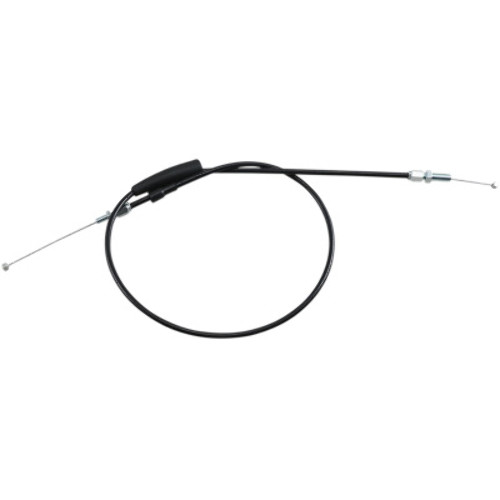 ). Maintenance by adding lubricant to the inside of the shroud and further adjustment of the cable may be a temporary measure. Practice shows that the repaired part is able to work smoothly for more than one season.
). Maintenance by adding lubricant to the inside of the shroud and further adjustment of the cable may be a temporary measure. Practice shows that the repaired part is able to work smoothly for more than one season.
First you need to put the scooter on the central stand. Next, remove the problem cable. In the process of dismantling, it is worth providing free access to all ends of the product. For additional lubrication, the cable is placed so that one end is on top of the other. It is best to keep it upright.
The next step is to ensure free movement inside the enclosure. This must be done, since the quality of the lubricant depends on the correctness of the work performed. Move the inner cable while keeping one end of the cover parallel. If you can't handle this task, read on to find out how to do it the right way.
Once you are sure of good mobility, you can start lubricating. Take unnecessary containers with you. Experienced scooters recommend using a tube of toothpaste, cream, and so on. You can also use any other container, it is important to make sure that it fits snugly on the spool on the jacket braid. Do not forget to prophylactically clean the container from the remnants of cream, paste, and so on. Gasoline or acetone will help with this.
You can also use any other container, it is important to make sure that it fits snugly on the spool on the jacket braid. Do not forget to prophylactically clean the container from the remnants of cream, paste, and so on. Gasoline or acetone will help with this.
When the container is ready, you can start lubricating. Experts recommend using a mixture of oil and gasoline in approximately the same ratio. If there are large traces of rust on the surface of the cable, use more gasoline. On the other hand, if there is a normal surface without defects, it is worth adding less gasoline. If you are using liquid oil, avoid gasoline altogether.
After you have prepared the lubricant, fill the tube with it, then slide it tightly onto the spool at the top of the shirt. The tube is always vertical, the head "looks" down. The inner surface must be filled so that the lubricant is evenly distributed along the entire length. When lubricating, always move the lower end of the cable up and down. If you do everything right, grease will appear at the bottom of the cable itself.
If you do everything right, grease will appear at the bottom of the cable itself.
What should I do if the rope refuses to move along the inner walls of the net? The interior surface will need to be cleaned. To do this, follow the above steps twice, but top up with clean gasoline first. Acting as a solvent, it completely removes traces of rust accumulated from the walls. Rope mobility will be restored. And only then pour the oil inside.
Replacement is very easy. Simply remove the old cable by unplugging it from the controls, insert a new one and adjust the tension if lost. Practice shows that adjustment is usually not required, since when adjusting, we practically do not touch the carburetor bolts. In some models, it is necessary to adjust the tension of the coil, which is screwed into the carburetor. Therefore, before starting work, you should, if possible, count the number of wires you see, and then screw the cable to the same level.
Even a woman can replace the gas cable on a scooter. Watch the video of Amber Miller changing the cable (Part 1):
As you can see, changing the cable on scooters is easy. The main thing is to prepare all the materials for work in advance, correctly assess the condition of the part and leave a lot of free space for work. The average service and replacement time does not exceed one hour.
Information
 To learn more.
To learn more.
20% OFF Buggy
spare parts in stock
We decided to replace the motorcycle spark plugs ourselves, but no luck, the spark plug broke and the threaded part remained well in the spark plug. What to do? Are you trying to reach with your fingers or a screwdriver? Where.
It's already hot, the snow is melting. Motorcycle season 2015 is about to start. Hurry up and get your bike ready for the new season. It is better to carry out all planned work before "dry asphalt". Also, there are no queues now.
Our new website is finally up and running. Now it's prettier and better. Our site is dedicated exclusively to the work of motorcycle service. Here the visitor can learn about the types of work performed, the cost of work and our contacts.
When you turn the throttle on a motorcycle, open the throttle with the throttle cable. Actually two cables. One cable opens the shock absorber, and the other closes. After all, the return spring simply cannot be trusted, it does not guarantee safety and can close the shock absorber in time. The correct alignment of these two cables is very important for the correct operation of the motorcycle engine. If you pull on the cable, you will overspeed or not start the bike at all. If you loosen the cable, you will lose control of the bike in a difficult situation and full power will not be available. I divided the throttle cable adjustment into stages:
The best option is to put the motorcycle on a motorized lift. If not, place it on a center stand or tackle.
There is a tensioner on the throttle cables. These are two wheels located on the cable sheath ten centimeters from the throttle or immediately below it. The principle of tension with this device is simple: by rotating the wheel, the sheath of the rope is lengthened, and consequently the release of the rope is shortened. As the wheel rotates, the link shortens and the cable lengthens. It is so simple! So, now we have to spin the wheels in order to loosen the tension of the cable as much as possible.
The principle of tension with this device is simple: by rotating the wheel, the sheath of the rope is lengthened, and consequently the release of the rope is shortened. As the wheel rotates, the link shortens and the cable lengthens. It is so simple! So, now we have to spin the wheels in order to loosen the tension of the cable as much as possible.
Remove the two screws on the right panel and open it in half. You can now see the end of the cable and the throttle grip mechanism. No further removal or disassembly is required. Clean the mechanism and the cable itself from dirt and dust. Lubricate the visible part of the cable and the points of friction with grease. Now we can assemble the remote before unscrewing the screws on the remote control case.
If your motorcycle has access to the throttle control, try to clean the dust thoroughly and lubricate it well with any aerosol lubricant. You can use WD-40 lubricant. If there is no access to the mechanism, it is necessary to remove the gas tank or even the air filter. It makes no sense to describe this procedure, since it is different for all motorcycles. Having no experience in this, it is best to use the services of a motorcycle service.
You can use WD-40 lubricant. If there is no access to the mechanism, it is necessary to remove the gas tank or even the air filter. It makes no sense to describe this procedure, since it is different for all motorcycles. Having no experience in this, it is best to use the services of a motorcycle service.
Try turning the throttle. Throttle handle free play, up to spring resistance, should be small, about one centimeter. Free play is needed so as not to open the sash if accidentally touched. If the handle has more than an inch of play, start slowly turning the adjusting wheel until you get the desired result. If attempts are not successful, contact a motorcycle dealer for assistance.
Make sure you have adjusted the throttle cable correctly before starting the engine. Use the throttle grip to fully open the throttle, then pull the throttle grip. The handle should quickly return to its original position, and you should hear a distinct click from the carburetor. Throttle valve closed. Hooray - You did everything right!
Throttle valve closed. Hooray - You did everything right!
Turn the ignition key and start the engine. The motorcycle engine should run smoothly, smoothly and at normal idle speed. If necessary, adjust the minimum with a screw. Don't try to find the X/X adjusting screw on an injection engine. No. Open the throttle to 30% and release the throttle quickly. The engine should quickly slow down and return to normal idle. In conclusion, I want to tell you. A motorcycle is a very complex vehicle that requires constant maintenance. Spend more time with your bike and it will never let you down. Or entrust this work to us. We are engine repair professionals. You can trust us with your motorcycle. Be sure: we will not disappoint you!
When using a scooter, the owner may encounter a situation where the gas does not work correctly. The problem can be observed both when driving at high speed, and during the start / climb downhill. To “revive” the scooter, replacing the gas cable is not always required, although there are times when it is necessary to purchase and install a new part.
To “revive” the scooter, replacing the gas cable is not always required, although there are times when it is necessary to purchase and install a new part.
Table of contents
Practice shows that the owner may encounter this problem for several reasons:
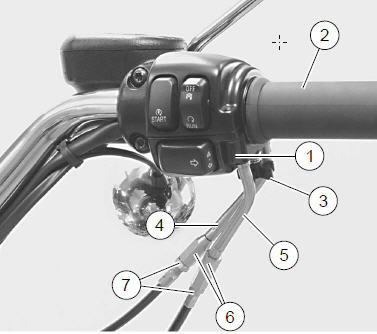 This problem occurs very rarely, since the cable has a good margin of safety. In combination with the above factors (lack of lubrication, corrosion, low strength), the part begins to suffer from thread breakage, which ultimately leads to a complete break. In addition, it is possible to break the cable in an accident, when the moped falls to the right side, or when the throttle knob is turned very strongly.
This problem occurs very rarely, since the cable has a good margin of safety. In combination with the above factors (lack of lubrication, corrosion, low strength), the part begins to suffer from thread breakage, which ultimately leads to a complete break. In addition, it is possible to break the cable in an accident, when the moped falls to the right side, or when the throttle knob is turned very strongly. The cable plays an important role in the control system of the scooter. If it fails, the gas can jam, usually resulting in a traffic accident and serious injury. Therefore, the task of any owner is a timely check of the condition, maintenance and replacement (as needed).
A scooter cannot always afford to replace a part with a new one (lack of money, a trusted store, and so on). A temporary measure may be maintenance, which consists in adding lubricant to the inside of the casing and further adjustment of the cable. Practice shows that a serviced part is able to work more than one season without problems.
To get started, first place the scooter on the center stand. Next, remove the problem cable. In the process of dismantling, it is worthwhile to ensure free access at all ends of the product. For further lubrication, the cable is placed in such a way that one end is placed above the other. It is best to fix it in a vertical position.
The next step is to allow free movement in the inside of the casing. This must be done, because the quality of lubrication depends on the correctness of the work performed. Move the cable, keeping one end of the casing parallel. If you can't handle this task, read on for how to do it right.
Once good mobility has been achieved, lubrication can begin. Take any unnecessary container with you. Experienced scooters recommend using a small tube of toothpaste, cream, and so on. You can also use any other container, the main thing is to make sure that it is tightly connected to the spool on the shirt braid. Do not forget to pre-clean the container from the remnants of cream, paste, and so on. Gasoline or acetone will help with this.
Gasoline or acetone will help with this.
Once the container is ready, lubrication can begin. Experts recommend using a mixture of oil and gasoline in approximately the same ratio. If there are large traces of rust on the surface of the cable, more gasoline should be used. On the other hand, if there is a normal surface without defects, it is worth adding less gasoline. If you use liquid oil, refrain from gasoline altogether.
After preparing the lubricant, fill the tube with it, then put it very tightly on the spool at the top of the jacket. The tube is always located vertically, the head "looks" down. It is necessary to fill the inner surface so that the lubricant is distributed evenly along the entire length. Always move the lower end of the cable up and down while lubricating. By doing everything right, the lubricant itself will appear at the bottom of the cable.
What should I do if the cable refuses to move along the inner walls of the shirt? You will need to clean the interior.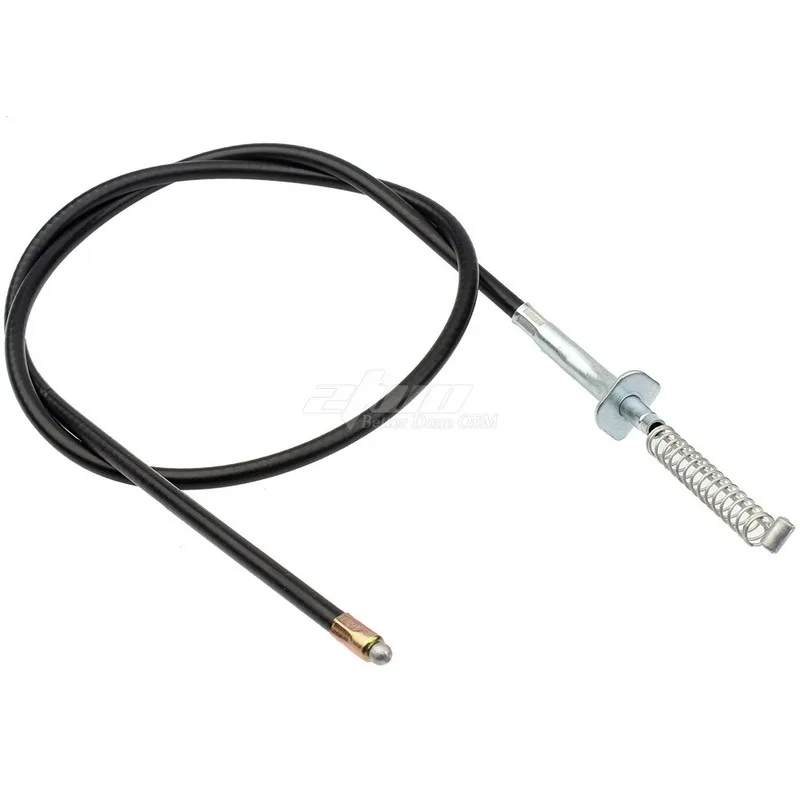 To do this, carry out the above steps twice, but initially pour clean gasoline inside. Acting as a solvent, it will completely rid the walls of accumulated traces of rust. The mobility of the cable will be restored. And only after that pour oil inside.
To do this, carry out the above steps twice, but initially pour clean gasoline inside. Acting as a solvent, it will completely rid the walls of accumulated traces of rust. The mobility of the cable will be restored. And only after that pour oil inside.
Replacement is very easy. It is enough to remove the old cable by disconnecting it from the controls, install a new one and adjust its tension if it has gone astray. Practice shows that adjustment is usually not required, since when adjusting, we practically do not touch the carburetor bolts. In some models, it is necessary to adjust the tension of the spool, which is screwed into the carburetor. Therefore, before starting work, you should, if possible, count the number of threads you see, and then twist the cable to the same level.
We fasten the cable to the carburetor
Even a woman can replace the gas cable on a scooter. Watch the video of Amber Miller changing the cable (Part 1):
Watch the video of Amber Miller changing the cable (Part 1):
Part 2
As you can see, changing the cable on scooters is not a difficult task.